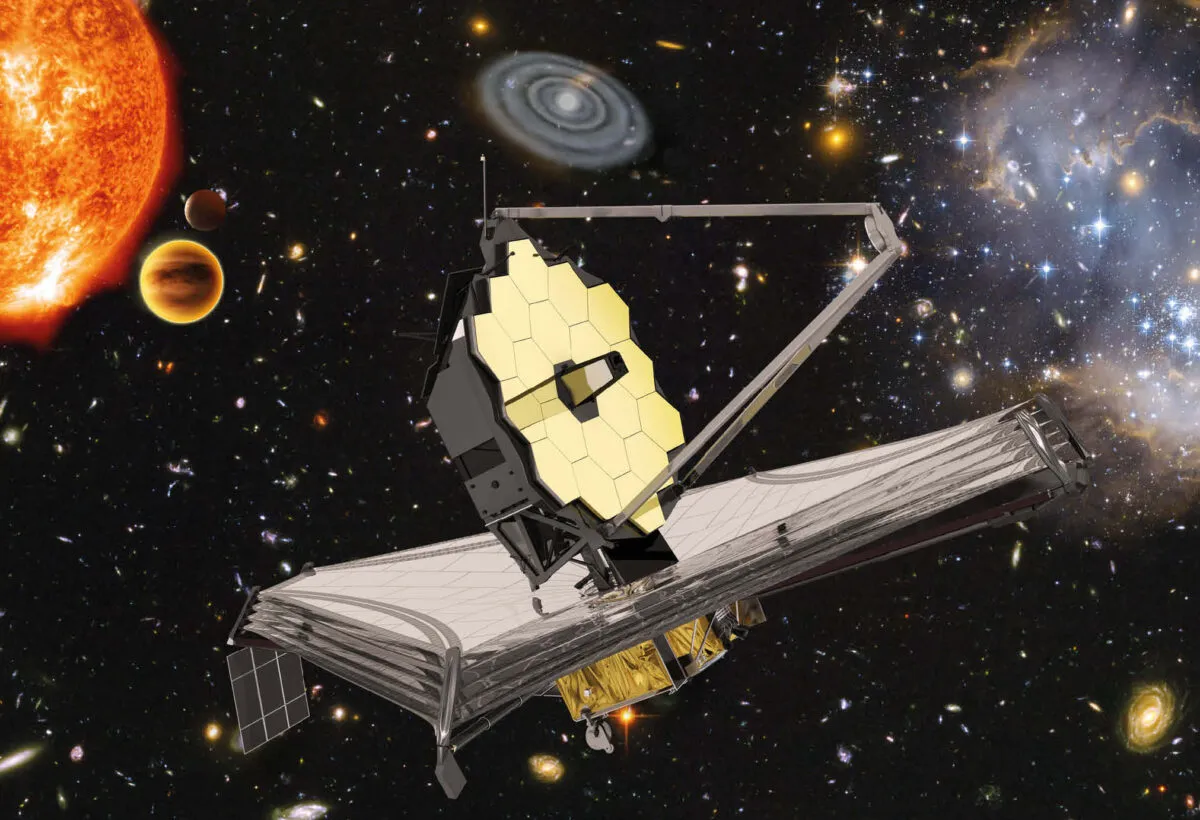The James Webb Space Telescope has captured an image of a planet orbiting a star 60 lightyears away, that astronomers say is one of the strangest they've ever seen.
The exoplanet, 14 Herculis c, is one of two known worlds orbiting star 14 Herculis, and is the coldest exoplanet ever imaged to date.
More on exoplanets

So far, around 6,000 exoplanets have been discovered and confirmed, but only a small number of those have been directly imaged.
What's more, most of the exoplanets that have been directly imaged are very hot; hundreds or even thousands of degrees Fahrenheit.
Yet data suggests 14 Herculis c, which is 7 times heavier than Jupiter in our Solar System, is about –3°C (26°F).

Expanding our catalogue of alien worlds
"The colder an exoplanet, the harder it is to image, so this is a totally new regime of study that Webb has unlocked with its extreme sensitivity in the infrared," says William Balmer, co-first author of the study and graduate student at Johns Hopkins University.
"We are now able to add to the catalog of not just hot, young exoplanets imaged, but older exoplanets that are far colder than we’ve directly seen before Webb."
Webb’s image of 14 Herculis c reveals it's unlike other exoplanets that have been studied in detail with both Webb and other observatories.
Central star 14 Herculis is similar to our Sun in age and temperature, but a little less massive and cooler.
There are two known planets aroud the star: 14 Herculis b is closer to the star, but in Webb's image it's covered up by the coronagraph, an instrument that blocks out the bright star so the much dimmer exoplanets can be seen.

Weird worlds around 14 Herculis
The two exoplanets around 14 Hercules don’t orbit the star on the same plane, like the planets in our own Solar System.
Instead, they cross each other like an ‘X’, because the orbital planes of the two planets are inclined to one another at an angle of about 40 degrees.
This means the planets are having a gravitational tug of war as they orbit the star.
Never before has a direct image been captured of such a strange orbital tango.
Astronomers say the unusual orbits could indicate a third planet was ejected from the system early in its formation, leaving the two remaining planets on an irregular orbital course.
"The early evolution of our own Solar System was dominated by the movement and pull of our own gas giants," says Balmer.
"They threw around asteroids and rearranged other planets. Here, we are seeing the aftermath of a more violent planetary crime scene.
"It reminds us that something similar could have happened to our own Solar System, and that the outcomes for small planets like Earth are often dictated by much larger forces."
Webb's investigations of 14 Herculis c
Webb’s new data is giving researchers further insights into not just the temperature of 14 Herculis c, but other details about the planet’s orbit and atmosphere.
And Webb has been able to refine what is known about its orbit, revealing the planet swings out 1.4 billion miles from the host star in a highly elliptical, or egg-shaped orbit, closer-in than previous estimates.
For perspective, that's about 15 times farther than Earth orbits the Sun, putting 14 Herculis c between Saturn and Uranus in our Solar System.
Webb measured the planet’s brightness at 4.4 microns which, when combined with the known mass and age, tells astronomers what's going on in its atmosphere.
"If a planet of a certain mass formed 4 billion years ago, then cooled over time because it doesn't have a source of energy keeping it warm, we can predict how hot it should be today," says Daniella C. Bardalez Gagliuffi of Amherst College, co-first author on the paper.
"Added information, like the perceived brightness in direct imaging, would in theory support this estimate of the planet’s temperature."
14 Herculis c's brightness is fainter than expected for an object of this mass and age, the team say, and this is because of something called 'carbon disequilibrium chemistry'.
"This exoplanet is so cold, the best comparisons we have that are well-studied are the coldest brown dwarfs," Bardalez Gagliuffi says.
"In those objects, like with 14 Herculis c, we see carbon dioxide and carbon monoxide existing at temperatures where we should see methane.
"This is explained by churning in the atmosphere. Molecules made at warmer temperatures in the lower atmosphere are brought to the cold, upper atmosphere very quickly."

